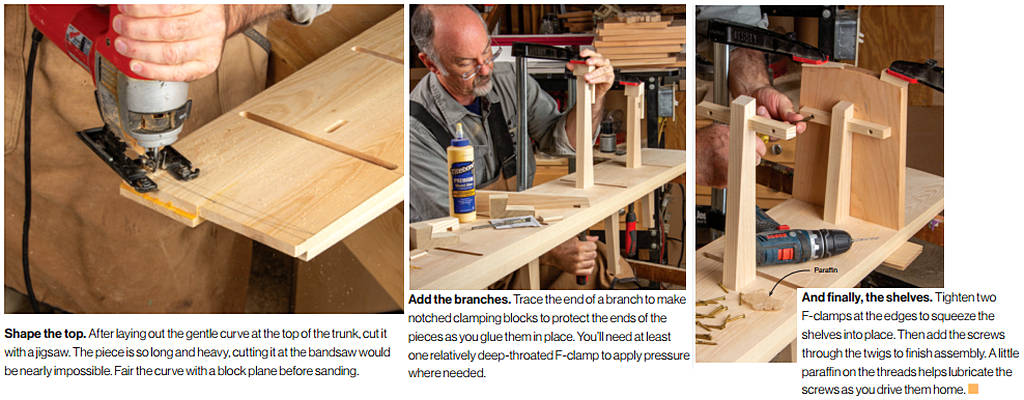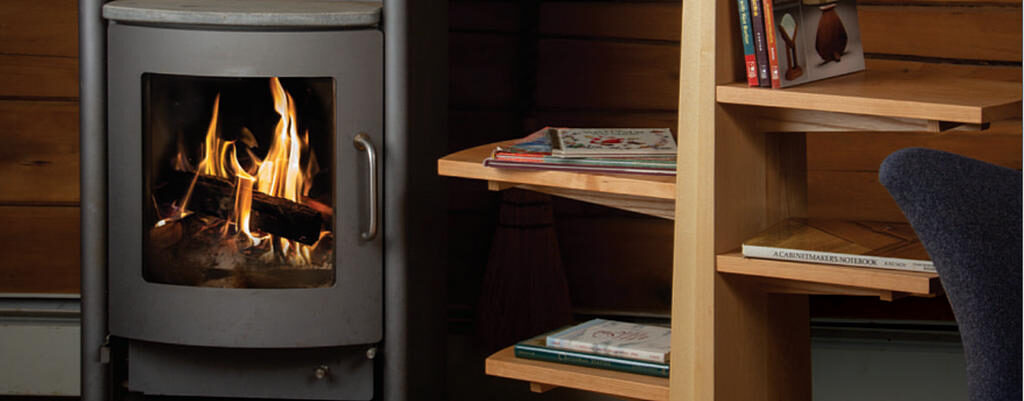Grow a home for your hook and magazine collection.
To me, no room is complete without at least a few books at hand. But not every room needs or has the wall space for an actual bookcase. After seeing a free-standing book “tree” used as a promotional display in a bookshop. I set about designing one that would look good in a residential setting. After making a series of sketches and models. I arrived at the design presented here. Its various widths and lengths of shelves allow it to display a nice array of printed matter as well as three-dimensional art work. The unit is well-balanced and looks good from all sides, to it doesn’t have to be against a wall, there are enough subtle angles involved to make the build suitably challenging without it becoming a real headache. Because of the size and weight of the trunk and the need to clamp things to it, I found easier to do most of the work atop saw horses instead on my bench. I made my book tree from ash with cherry shelves, but feel free to vary the wood selection to suit your decor.
A stout trunk supports sturdy branches
The tapered center trunk is Laminated from two pieces of resawn 8/4 stock. The main branches have halt’-lap joints at their outer ends where the “twigs” attach, and loose tenons at their inner ends to join them to the trunk. The shelves fit in dadoes cut across the trunk and are attached to the twigs with screws. The feet are also joined to the trunk with loose tenons.

Make the trunk
Mill two pieces of 8/4 stock to 6¼ x 93″, leaving them as thick as possible. Snap a diagonal chalk line on one edge of each piece to serve as a guide for resawing. Bandsaw both boards along the chalk lines to make four matching wedges.
Cut the points ends off, leasing the wedges 61″ long and clean up the sawn faces on the jointer before face-gluing them in pairs into two trunk halves.
This should lease you with two wedges that are about 3″ thick at the bottom and 1″ thick at the top. Edge-glue the laminated wedges together to form the trunk. Clean up the center glue line with a hand plane or belt sander. Also rip the trunk to its full 11¾” width. Measure the taper angle as shown and base all subsequent operations on this reading. Crosscut the bottom of the trunk with the blade on your table saw tilted to match the angle you just measured. Set the T-bevel aside to use throughout the build. Finally, mark the layout lines foe the cuts that will taper the trunk in width, but leave the piece rectangular until after you rout the shelf dados.

Rout the dados
To make the shelves meet the trunk at the proper angle, their dados must be cut at a non-90° angle to the trunk’s faces. To accomplish this, attach an 8° x 11° auxiliary base to your plunge router. Then adhere a 3/14″ thick foot at one end of the base with double-faced tape to tilt the router to the proper angle. Adjust the fool’s thickness with a block plane until a square held on i the base matches the taper angle on k your T-bevel. Then lay out the dado locations on both faces. Rout the dados, guiding the router along a T-square fence, damp blocks Ia in place to stop the dados 1/2″ inside the taper layout lines.
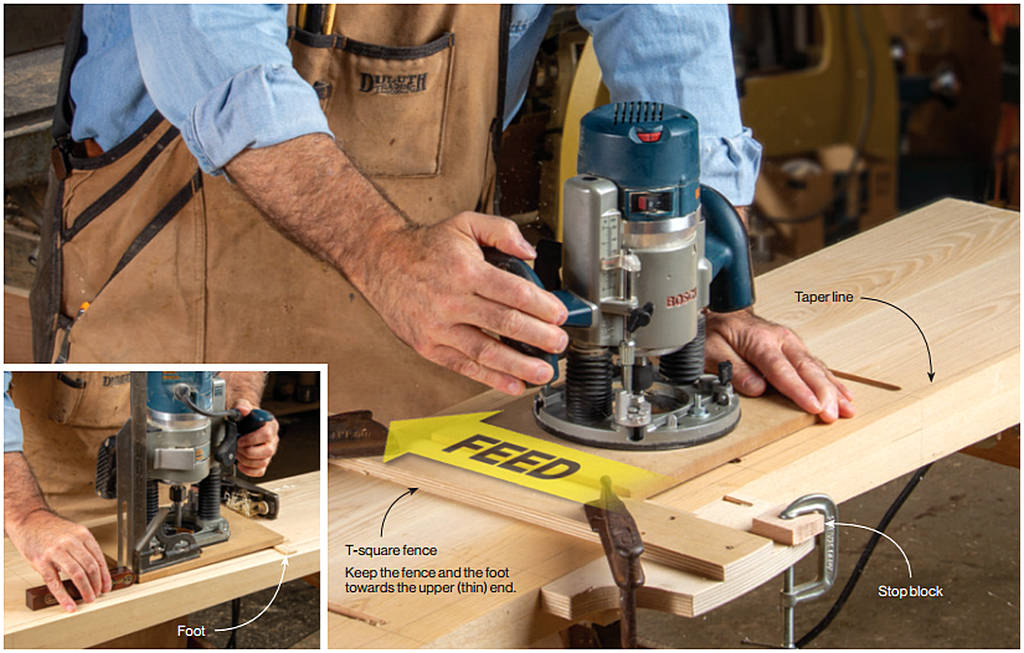
Branch joinery
Mill the branches, twigs, and feet to the sizes specified on photo.
You’ll be cutting the branches and twigs shorter later. (Yes. this wastes a little material, but it is worth it to be able to cut the joinery and tapers with the same setups.) Set up a 1/2″ wide dado blade on the table saw and cut the notches for the lap joints in the branches and twigs. Switch back to a regular blade and taper the branches.
Next, cut the branches to length by crosscutting the wider end with the miter gauge set to match the angle on your T-bevel. Each branch should be 2½” shorter than its corresponding shelf. Also, cut one end of each foot at this slight angle. Then rout the branch and loot mortises in the trunk Finally, rout the corresponding mortises in the ends of the branches and feet.
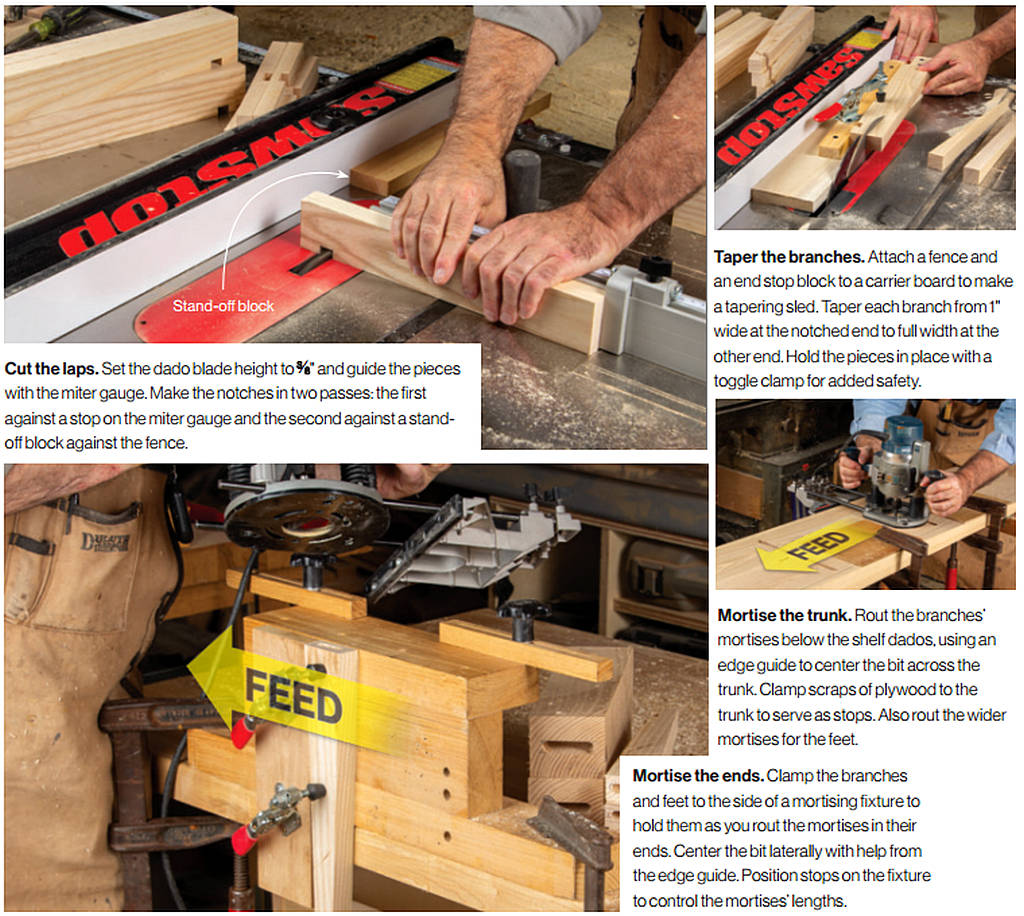
Make the shelves
Mill the shelves, to size and sand what will become the upper face of each.
It is important to sand these surfaces first as they will be the reference for the tongues that will fit in the dados you cut earlier in the trunk. If you sand after cutting the tongues, you’re likely to have a sloppy fit. To create the tongues, rabbet the underside of one end of each shelf. Then recut the shoulder with the blade tilled to match the trunks taper. Trim the ends of the tongues to fit in their mating dados paring the shoulders carefully to match the taper angle. If necessary, adjust the tongues’ thickness with a shoulder plane. Lay out the tapers on the shelf sides and the curves at their ends as shown in the Shelf detail (below) before cutting them to shape at the bandsaw. Sand away the saw marks to clean up the edges.
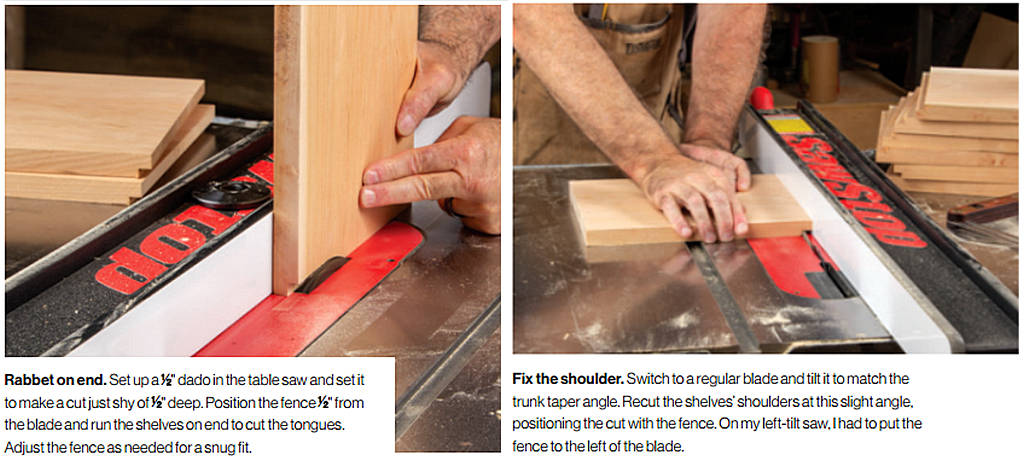
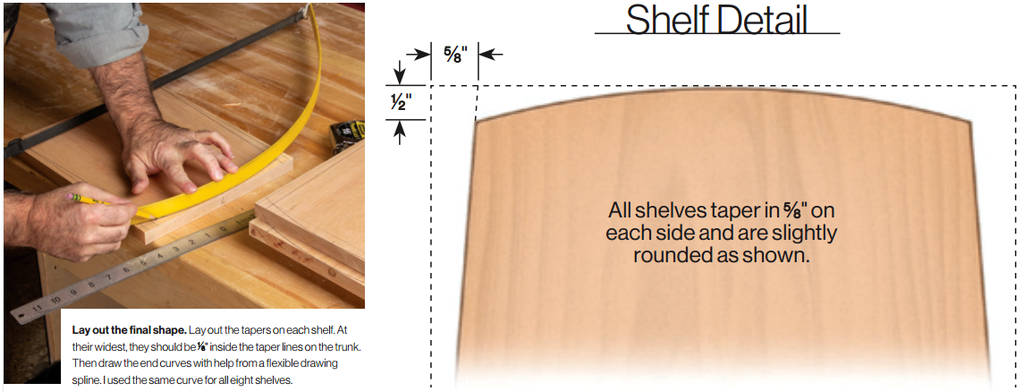
Assemble & finish
Make the final taper cuts on the trunk at the bandsaw and clean up the sawn edges at the jointer. Lay out and cut the top curve. Sand the trunk before gluing the branches in place. Drill screw holes through the twigs then glue and screw the twigs into the notches at the ends of the branches.
Check the fit of the shelves in their dados then glue them in place. Finish as desired, I used a wiping varnish.
